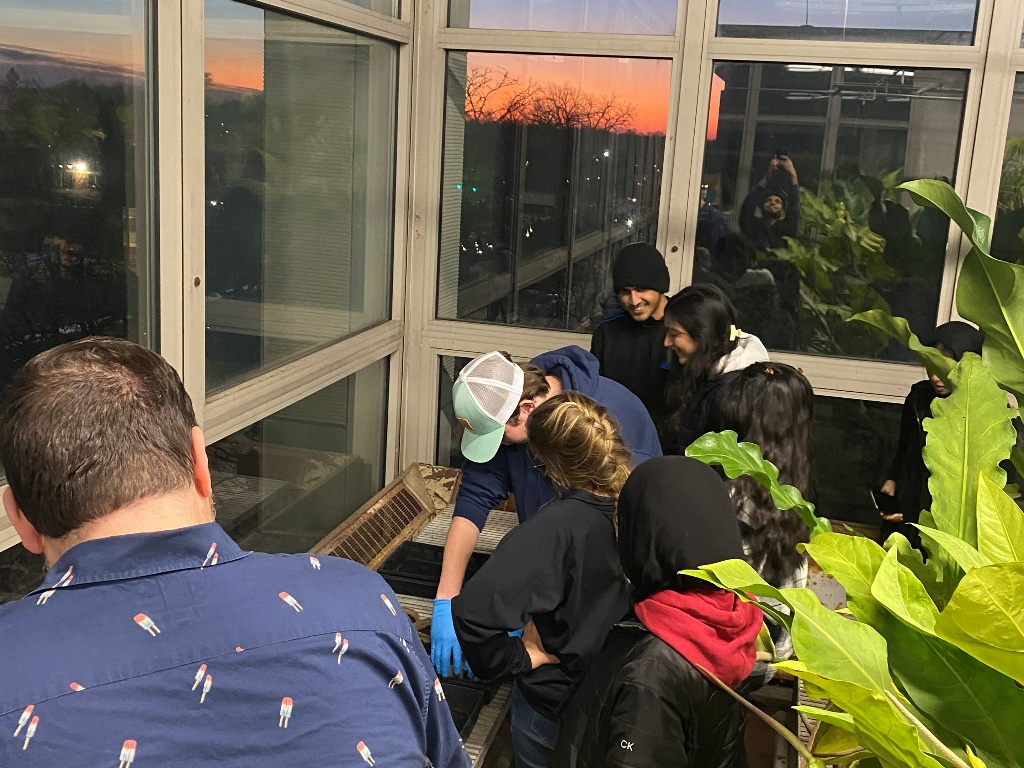Have you ever noticed IU Northwest’s greenhouse? Time to look up!
Maybe it’s due to its third-floor location, or that surrounding windows make it less noticeable, but Indiana University Northwest has a gem of a resource that many people overlook—a greenhouse! Located on the south end of Marram Hall, it’s not exactly a little glass house, either—it is 36 feet long, 24 feet wide and 35 feet high.
From the time that it was built in 1991, Richard Sheffer, an associate professor of biology, championed the use of the space, doing chromosome analysis on aroids—a primarily tropical family of plants that often have large showy leaves but tiny inconspicuous flowers packed into a spike.
Even after retiring, Sheffer remained on as emeritus faculty and continued to care for the plants—until the COVID-19 pandemic began. At that point, Gayle Tonkovich, academic lab specialist and NIRMI procedural manager for the Biology Department, became the caretaker of the greenhouse.
While Tonkovich’s role at the school is to manage the campus’ lab facilities, equipment and scientific collections, she also happened to have a bachelor’s and master’s degree in botany.
“Since I was one of the designated essential employees to come to campus to make sure our scientific instrumentation was safe, I also took on the duties of the greenhouse,” she said.
While campus was quiet, Tonkovich said her goal for the space was simple: “I’m just going to keep everything alive.”
Her goal was most definitely met, as today the greenhouse continues to not only blossom and bloom but thrive.
In addition to the 100 or so specimens Sheffer originally used in his research, he also “adopted” many store-bought plants from staff and faculty who were having a tough time keeping them alive. Today, the greenhouse also features an ad hoc collection of tropical orchids, a palm tree that started to outgrow its original space, a Norfolk Island pine that used to make its way around the Biology Department and other orphaned plants now flourishing under Tonkovich’s care.










